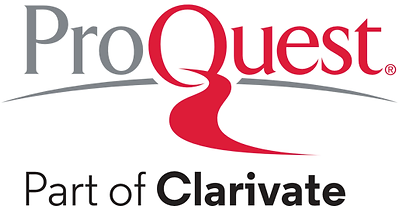Ultraviolet Photodetector Based on Nanostructured Copper Iodide Films Deposited by Automatic SILAR Method
| Authors | D. Fedonenko1, S.I. Petrushenko2,3, K. Adach3, M. Fijalkowski3, V.M. Sukhov 2, S.V. Dukarov2 , A.L. Khrypunova1 , N.P. Klochko1 |
| Affiliations |
1National Technical University “Kharkiv Polytechnic Institute”, 61002 Kharkiv, Ukraine 2V.N. Karazin Kharkiv National University, 61022, Kharkiv, Ukraine 3Technical University of Liberec, 46117, Liberec, Czech Republic |
| Е-mail | etrushenko@tul.cz |
| Issue | Volume 17, Year 2025, Number 2 |
| Dates | Received 18 January 2025; revised manuscript received 15 April 2025; published online 28 April 2025 |
| Citation | D. Fedonenko, S.I. Petrushenko, et al., J. Nano- Electron. Phys. 17 No 2, 02025 (2025) |
| DOI | https://doi.org/10.21272/jnep.17(2).02025 |
| PACS Number(s) | 68.35. – p, 78.66. – w |
| Keywords | Copper iodide, Ultraviolet photodetector, SILAR (7) , Photosensitivity, Responsivity, Specific detectivity, External quantum efficiency. |
| Annotation |
The paper presents the results of studies of the structure, composition and morphology of sulfur-doped copper iodide (CuI) nanostructured films deposited on glass substrates by the Successive Ionic Layer Absorption and Reaction (SILAR) method for use as functional materials for ultraviolet photodetectors (UV PD). By varying the temperature used in the deposition process, it is possible to obtain 1 m thick CuI layers with the morphology of nanoflakes (at 20 C) or with (111)-textured triangular CuI nanograins (at 30 C). By equipping these copper iodide layers with Cr/Cu thin film electrodes on both sides, we obtained UV PDs of photoconductive type. Their linear current-voltage characteristics confirmed the formation of ohmic contacts. The photoresponses of UV PDs over time were recorded and analyzed under different intensities from 0.15 mW/cm2 to 1.17 mW/cm2 of UV light with an average wavelength of 367 nm. According to the generally accepted criteria for evaluating the performance of a photodetector, the UV PD with the CuI nanoflake morphology has a higher performance and a shorter response time than that based on the nanostructured copper iodide film with triangular grains. It exhibits the photosensitivity of 170 %, the responsivity of 3 A/W, the specific detectivity of 1.2‧1011 Jones and the external quantum efficiency of 1000 %. These results are similar to those recently obtained by various research groups around the world, confirming the potential of using the UV photosensitive CuI material with nanoflake morphology obtained by the automatic SILAR method in thin-film UV sensing technology. |
|
List of References |
Other articles from this number
1) Innovations and Applications in Nanosensor Technologies: A Brief Review [02001-1-02001-10]2) Prediction of Physical Behavior of Bi-Modified Se-Ge Chalcogenide System [02002-1-02002-4]
3) Design and Implementation of a Tree Fractal Biosensor Antenna System for Wireless Remote Patient Monitoring [02003-1-02003-6]
4) Cubic Nonlinear Theory of Superheterodyne Parametric H-ubitron FEL with Section for Amplifying Longitudinal Space Charge Waves [02004-1-02004-6]
5) Influence of Interactions between Adsorbate and Substrate on the Statistical Properties of Surface Structures at Condensation [02005-1-02005-6]
6) The Effect of Geometry on Thermoplasmonic Phenomena in Metallic Nanoparticles [02006-1-02006-11]
7) An Improved Low Power Sense Amplifier Using Level Restoration Technique and Performance Comparison with Existing Sense Amplifier Topologies at 32 nm Technology [02007-1-02007-8]
8) Simulation and Analysis of Heat Dissipation in Compact Routers: Efficiency of Radiators and Case Perforations [02008-1-02008-8]
9) Translational Twins Extraordinary Classification of Divalent Nitrates [02009-1-02009-4]
10) Features of Oxidation and Annealing of Iron Nanoparticles, Obtained by the EB-PVD Method on a Rotating Substrate [02010-1-02010-6]
11) Characterization and Optimization of Si0.75Ge0.25-FinFETs Based on Operating Temperature and Gate Length [02011-1-02011-7]
12) Pulse Duration Effect of Laser Ablation on the Morphology Properties of Gold Nanoparticles Deposited on Porous Silicon [02012-1-02012-6]
13) Influence of Laser Thermal Cycling on the Structure Evolution and Tribological Properties of Plasma Coatings [02013-1-02013-5]
14) Effect of Uniaxial Compression on Excitation Conditions and Parameters of Low-Frequency Auto-Oscillations of Current in Compensated Silicon [02014-1-02014-6]
15) Reflection of Bilateral Porous Silicon with Macropores or Nanowires [02015-1-02015-7]
16) Design and Simulation of Microstrip Patch Antenna for Inter-Aircraft Communication in UHF, L-band and S-band [02016-1-02016-7]
17) Building Material Complex Permittivity at X-Band Frequencies: An Evaluation [02017-1-02017-5]
18) A Novel Low Pass Filter (LPF) Configuration Utilizing Square Complementary Split Ring Resonators [02018-1-02018-5]
19) Wideband DGS Slot Loaded Patch Antenna for High-Speed mm-wave 5G Applications [02019-1-02019-5]
20) Study of the Elemental Composition of Thin Films of CoNi and FeNi Alloys by X-ray Spectral Microanalysis [02020-1-02020-8]
21) Vanadium Dioxide-assisted Dual Band Polarization-insensitive Metamaterial Absorber for Terahertz Applications [02021-1-02021-5]
22) 6.6 GHz Single Element 2 x 4 Massive MIMO Antenna in 6G Devices [02022-1-02022-5]
23) A Triple Band Square Shape Multi-slot Defective Ground Structure Patch Antenna for C-, X-, and Ku-band Applications [02023-1-02023-5]
24) Design and Development of Four Element Multiband MIMO Microstrip Antenna for LTE/5G Applications [02024-1-02024-6]
25) Multiband Operational Antenna in Ultra Wide Band (UWB) Frequency Range with Substrate Structure Modification Approach [02026-1-02026-6]
26) Quality Control Model for Electrospun Nanofibers through Image Analysis [02027-1-02027-6]
27) Resistance to High-Temperature Gas Corrosion of Сhromaluminizing Coatings with a (Ti, Zr)N Layer on Nickel [02028-1-02028-7]
28) Energy-Conscious FPGA Design through Dynamic Voltage and Frequency Scaling for Wearable Devices [02029-1-02029-6]
29) Spintronic Prospects of Half-Heusler Alloy MnAuSn: DFT and Hybrid Functional Studies of Magnetic and Electronic Properties [02030-1-02030-5]
30) Теmperature Coefficient of Resistance of Nanoscale Materials for Flexible Electronic [02031-1-02031-4]
31) Influence of Fly Ash Type and Polymer Matrix on the Thermal Conductivity of Polymer Composites [02032-1-02032-6]






